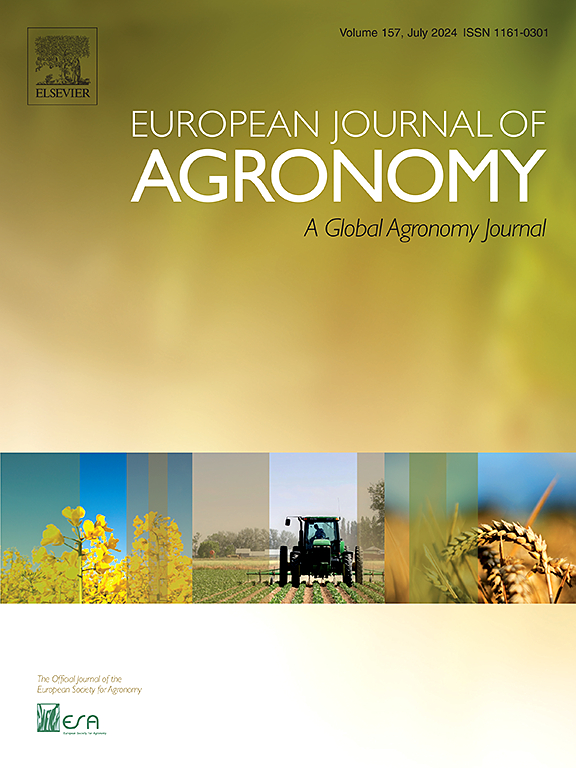Evaluating the impact of biostimulants at variable nitrogen rates in corn production
IF 4.5
1区 农林科学
Q1 AGRONOMY
引用次数: 0
Abstract
Biostimulants have garnered significant interest due to their potential to enhance crop productivity while optimizing nitrogen (N) uptake and nitrogen use efficiency (NUE). However, field research testing their efficacy in corn (Zea mays. L) production remains largely unexplored. Therefore, a field study was conducted in 2022 and 2023 in Mississippi (MS). A split plot design was implemented, with N rates as the main plot including 0 (control), 90, 180, 269 kg N ha−1 at Starkville, while Stoneville included an additional rate of 224 kg N ha−1. The subplot consisted of seven treatments, including a no biostimulant (check) and six microbial biostimulants (Source Corn®, Envita®, iNvigorate®, Blue N®, Micro AZ™, and Bio level phosN®) applied either as foliar at V4-V5 growth stages or in-furrow at planting. Nitrogen rates positively affected grain yield at all three site-years, whereas biostimulants effects on grain yield were only observed at one site (Stoneville 2022). Moreover, these differences only existed between six biostimulants and they were not significantly different from check plot with no biostimulant. Higher N rates reduced the efficiency of grain production in terms of NUE parameters and N uptake, showing a consistent inverse trend across all site years. This study observed minimal synergistic benefits of microbial biostimulants, despite evaluating their effectiveness alongside varied N rates. Further research testing diverse biostimulant categories with varied dosages and application timings is warranted to confirm their potential benefits for higher productivity and agricultural sustainability.
求助全文
约1分钟内获得全文
求助全文
来源期刊

European Journal of Agronomy
农林科学-农艺学
CiteScore
8.30
自引率
7.70%
发文量
187
审稿时长
4.5 months
期刊介绍:
The European Journal of Agronomy, the official journal of the European Society for Agronomy, publishes original research papers reporting experimental and theoretical contributions to field-based agronomy and crop science. The journal will consider research at the field level for agricultural, horticultural and tree crops, that uses comprehensive and explanatory approaches. The EJA covers the following topics:
crop physiology
crop production and management including irrigation, fertilization and soil management
agroclimatology and modelling
plant-soil relationships
crop quality and post-harvest physiology
farming and cropping systems
agroecosystems and the environment
crop-weed interactions and management
organic farming
horticultural crops
papers from the European Society for Agronomy bi-annual meetings
In determining the suitability of submitted articles for publication, particular scrutiny is placed on the degree of novelty and significance of the research and the extent to which it adds to existing knowledge in agronomy.
 求助内容:
求助内容: 应助结果提醒方式:
应助结果提醒方式:


